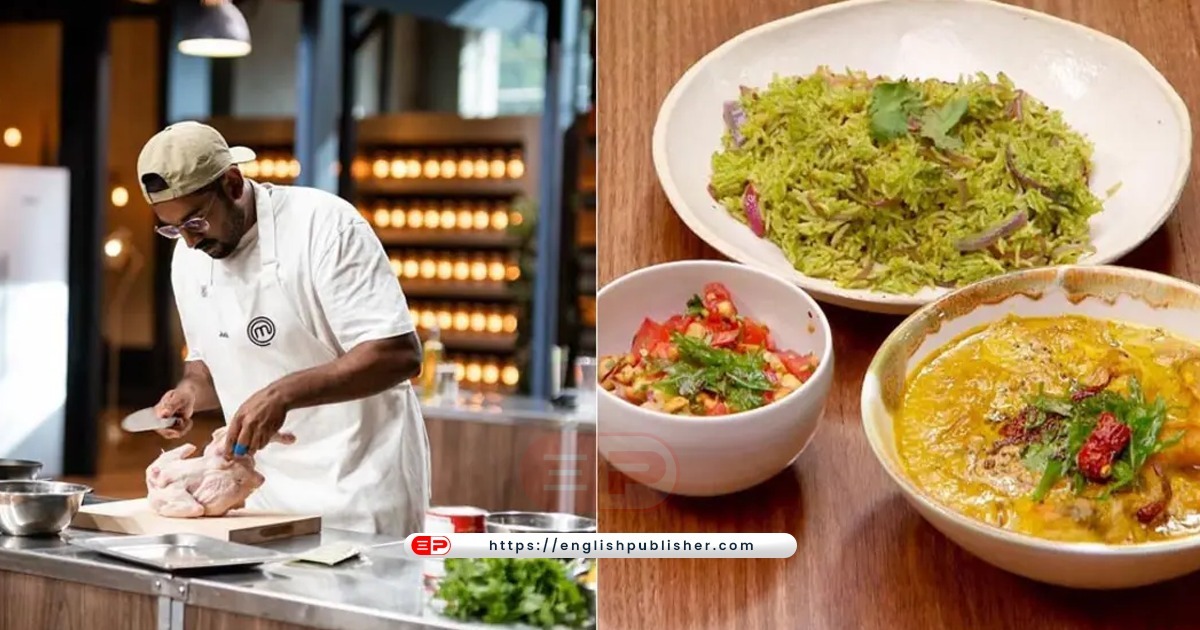Ruta Kahte is a woman on a mission to teach Americans the techniques of Indian cuisine. In particular, she talks about the use of traditional Indian spices in food.
Cookbook author, chef and restaurateur Ruta Kahte wants people to know that it is possible to make Indian dishes ‘without so many spices’.
That’s why he wrote his latest book ‘6 Spices, 60 Dishes: Indian Recipes That Are Simple, Fresh and Big on Taste’. ‘ I have chosen only six spices.
This book is a sequel to his previous book Panch Masale and 50 Pakwan, which was first published in 2007.
As he explains, when preparing Indian dishes, people are ‘intimidated with spices, or they’re not confident about using them or they don’t know how to use them.’
Whether Ruta Kahte is holding an Indian cooking workshop at a San Francisco farmer’s market in the US or setting up a new restaurant in the American Midwest during the Covid pandemic, her goal has always been to spread Indian culinary skills. Bring it to the general public.
What are the six magic spices?
“I want people to use my book, not put it on the shelf and then say, ‘Oh, one day I’m going to cook Indian food,'” she says.
Thus, he presents each of his Indian cooking recipes with a short and sweet introduction and at the end tips on serving the dish.
However, in his book on Indian cooking recipes, Ruta Kahte selects six basic spices that are used in most Indian cuisines and are also readily available in American grocery stores.
These spices include cumin, coriander, mustard seeds, turmeric, cayenne and asafoetida (a unique Indian spice extracted from a type of fennel). The latter is a particularly bold decision because the spice has such a strong smell that it is called devil’s dung.
He wrote about it in the book that ‘I couldn’t suppress my desire to keep this name because these crispy potatoes don’t have half the taste without the hang. A small amount of this magical spice brings out the wonderful flavor of onion and garlic in this dish, even though it doesn’t actually contain both onion and garlic.’
Rota Kahte themselves are vegetarians. Hence most of their dishes are based on vegetables. Kahte’s book contains a number of recipes for vegetarians, ranging from aubergine (a type of eggplant plant) to Brussels sprouts, bamboo shoots and raw kale. “I have also used vegetables in dal and meat dishes,” he admitted.
There are also many gluten-free dishes made using local millets and grains that she grew up eating in India. Interestingly, in some dishes she uses all the six masalas while there are some in which she uses only one type of masala. But despite all this, she says, they undoubtedly have unique Indian flavours.
Mumbai’s famous legume curry
She says that spicy bean curd is very popular in the western Indian state of Maharashtra. He also belongs to Maharashtra.
“There, we soak everything from fenugreek seeds to pulses, even grains,” she says. It is said that soaking lentils and grains softens their seeds, making them healthier and easier to digest, while increasing their vitamin and nutritional content.
Moong dal is very common in Indian cuisine. It is eaten in salads, curries and fried in all kinds of ways. It is even ground into crisps.
In fact, Ruta Kahte shares two more recipes for mung dal dishes in her book: one is a mung dal salad and the other is mung dal and cottage cheese wraps.
The above dish is derived from the famous Maharashtra dish ‘musal’, which is a spicy and tangy curry and is eaten with pau i.e. soft double bread. Musal is prepared at home as well as found at food dhabas in the city. It is seasoned differently with spices to taste everywhere.
Ruta says she often makes this curry at home and serves it with steamed rice or baguette (French bread). Apart from the flavor of fresh tomatoes and onions, this dish has raw potato crisps for an extra crunch.
Moong dal is easily available in shops. This is a popular quick dish.
Spicy Moong Dal Curry Recipe
Ruta Kahte shares her special recipe for making spicy mung dal curry. She says that if you want to make it for four people, use the following recipe.
Composition and ingredients
First step
If you are making mung dal curry at home, wash the mung dal thoroughly several times and then leave it to soak in plenty of water. Soak it overnight or for six to eight hours. Then filter it with water and remove the seeds that are not broken. You can hear the sounds of these grains in your pot.
Step 2
Place the soaked mung dal in a glass jar and cover it in such a way as to allow air circulation. Set it aside in a dark corner of the kitchen. In a day, their pimples will break out. Now you can proceed with the recipe.
Step 3
To make curry, take a pan and heat ghee on medium heat. When ghee is hot, add mustard seeds and cumin seeds. When they are hot and stop sizzling, add turmeric and asafoetida and then add soft split moong dal. Add coriander, red chillies and ground cumin seeds and saute well.
Step 4
Boil it by adding water, sugar and salt. Reduce the heat and then cover it and simmer for 10 to 12 minutes until the moong dal grains are cooked well and the curry water has dried up a bit.
Step 5
To flavor it, mix onion, tomato, coriander, lemon juice, chili and salt in a small bowl. Taste the combination of salt and sourness and adjust to taste. To serve this curry to guests, ladle the hot curry into a bowl and then eat it hot with potato crisps and roti or bread for flavor.
